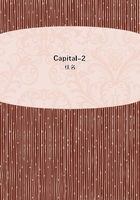
第113章
Finally, the entire supply of implements must be carefully overhauled every winter, and new purchases or repairs found necessary must be provided for at once. Whether or not one is to keep a great or small supply of articles of equipment is to be settled mainly by local conditions. Wherever there are no artisans or stores in the vicinity, it is necessary to keep larger supplies than in places where these are to be had on the spot or nearby.
But if the necessary supplies are procured in large quantities at a time, then other circumstances being equal, one generally gets the benefit of cheaper purchases, provided an appropriate time has been chosen to make them. True, the rotating working capital is thereby shorn of a correspondingly larger sum, all at once, which cannot always be well spared in the business."(Kirchhof, p. 301.)
The difference between production time and working time admits of many variations, as we have seen. For the circulating capital it may be production time before it enters into the labour-process proper (production of lasts); or it may be production time after it has passed through the labour-process proper (wine, seed grain); or the production time is occasionally interrupted by working time (agriculture, timber-growing). A large portion of the product fit for circulation remains incorporated in the active process of production, while a much smaller part enters into annual circulation (timber-growing and cattle raising); the longer or shorter period of time for which a circulating capital must be invested in the form of potential productive capital, hence also the larger or smaller amount of this capital to be advanced at one time, depends partly on the kind of productive process (agriculture), and partly on the proximity of markets, etc., in short, on circumstances pertinent to the sphere of circulation.
We shall see later (Book III), what senseless theories MacCulloch, James Mill, etc., arrived at as a result of the attempt to identify the production time diverging from working time with the latter, an attempt which in turn is due to a misapplication of the theory of value.
The turnover cycle which we considered above is determined by the durability of the fixed capital advanced for the process of production.
Since this cycle extends over a number of years it comprises a series of either annual turnovers of fixed capital or of turnovers repeated during the year.
In agriculture such a cycle of turnovers arises out of the system of crop rotation. "The duration of the lease must in no case be less than the time of completion of the adopted system of crop rotation. Hence one always calculates 3, 6, 9, etc., in the three-field system. In that system with clean fallow, a field is cultivated only four times in six years, being sown to winter and summer grain in the years of cultivation, and, if the properties of the soil require or permit it, to wheat and rye, barley and oats successively. Every species of grain differs in its yield from the others on the same soil, every one of them has a different value and is sold at a different price. For this reason the yield of a field is different every year it is cultivated, and different in the first half of the rotation (the first three years) from that of the second. Even the average yield of one period of rotation is not equal to that of another, for fertility does not depend solely on the good quality of the soil, but also on the weather each year, just as prices depend on a multitude of changing conditions.
If one now calculates the income from a field by taking into account the average fertility and the average prices for the entire six-year rotation period, one finds the total income of one year in either period of the rotation. But this is not so if the proceeds are calculated only for half of the time rotation, that is to say, for three years; for then the total income figures would not coincide. It follows from the foregoing that a lease of land worked by the three-field system should run for at least six years. It is however always still more desirable for lessor and lessee that the duration of the lease should be multiple of the duration of the lease ( sic! ); hence that it should be 12, 18, and ever more years instead of 6 years in a system of three fields and 14, 28 years instead of 7 in a system of seven fields." (Kirchhof, pp. 117, 118.)(At this place the manuscript contains the note: "The English system of crop rotation. Give a note here.")